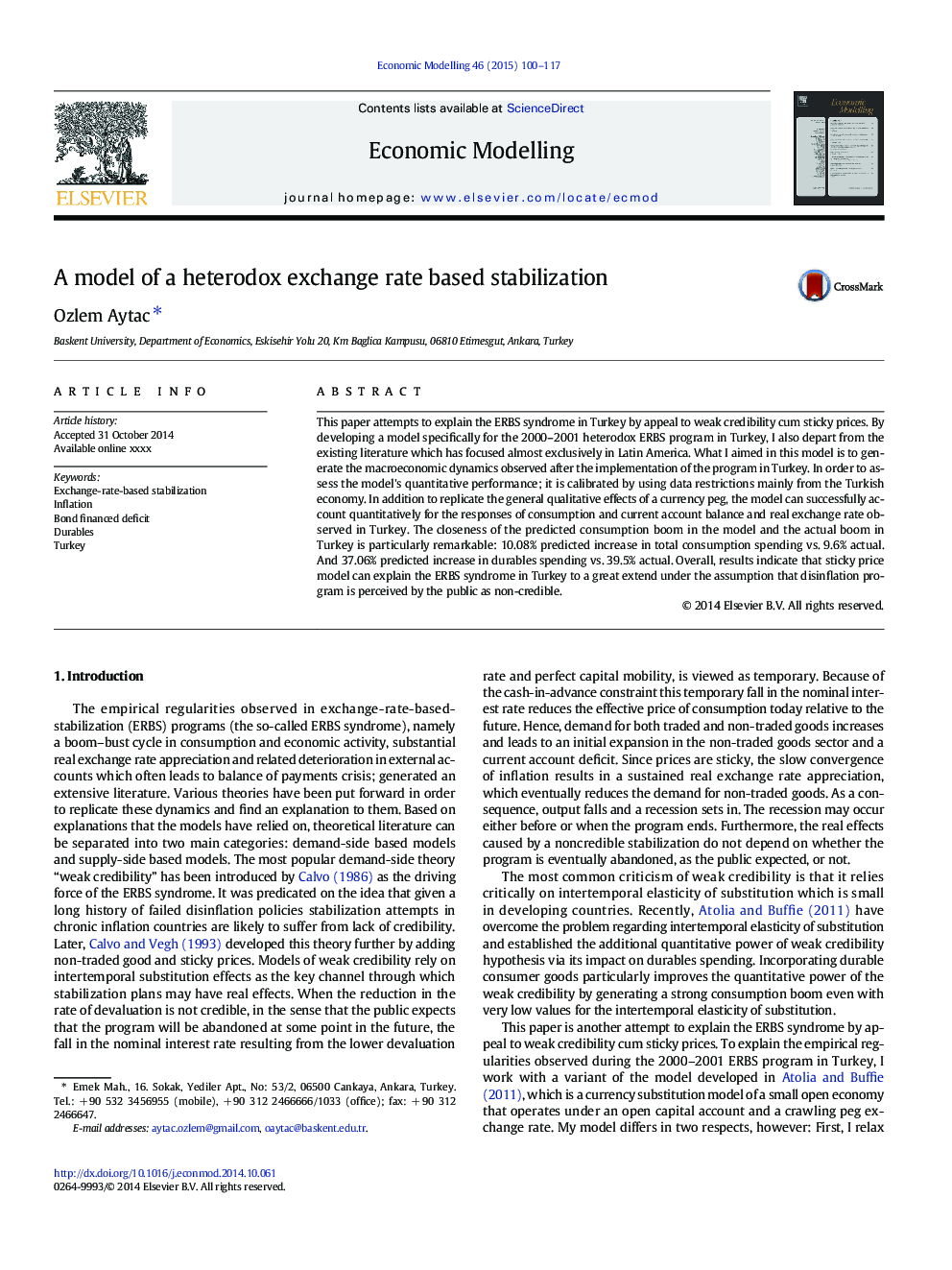| Article ID | Journal | Published Year | Pages | File Type |
|---|---|---|---|---|
| 5053774 | Economic Modelling | 2015 | 18 Pages |
Abstract
This paper attempts to explain the ERBS syndrome in Turkey by appeal to weak credibility cum sticky prices. By developing a model specifically for the 2000-2001 heterodox ERBS program in Turkey, I also depart from the existing literature which has focused almost exclusively in Latin America. What I aimed in this model is to generate the macroeconomic dynamics observed after the implementation of the program in Turkey. In order to assess the model's quantitative performance; it is calibrated by using data restrictions mainly from the Turkish economy. In addition to replicate the general qualitative effects of a currency peg, the model can successfully account quantitatively for the responses of consumption and current account balance and real exchange rate observed in Turkey. The closeness of the predicted consumption boom in the model and the actual boom in Turkey is particularly remarkable: 10.08% predicted increase in total consumption spending vs. 9.6% actual. And 37.06% predicted increase in durables spending vs. 39.5% actual. Overall, results indicate that sticky price model can explain the ERBS syndrome in Turkey to a great extend under the assumption that disinflation program is perceived by the public as non-credible.
Related Topics
Social Sciences and Humanities
Economics, Econometrics and Finance
Economics and Econometrics
Authors
Ozlem Aytac,
